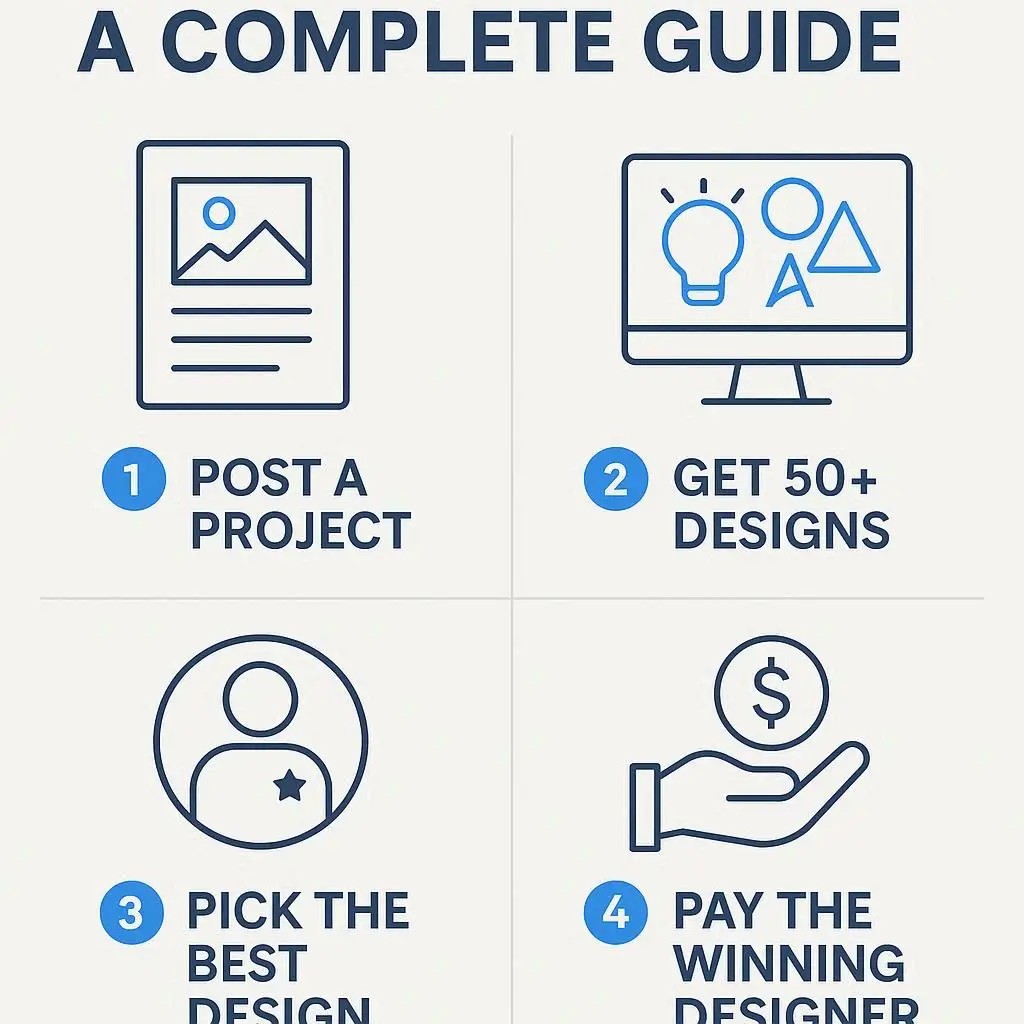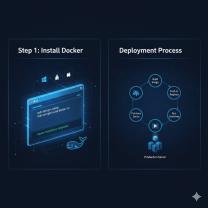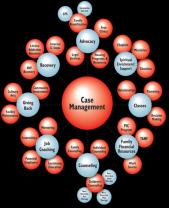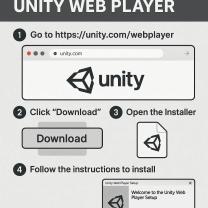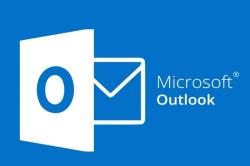How does designdesigncrowd work?
How DesignCrowd Works: A Complete Guide
DesignCrowd is an online platform that connects businesses with freelance designers around the world. Whether you need a logo, website design, packaging, or other creative work, DesignCrowd makes it easy to find the right designer for your project.
What is DesignCrowd?
DesignCrowd is a crowdsourcing platform for design services. Businesses post projects, and a global community of designers submits their work. Clients then review the submissions, provide feedback, and choose the design that best fits their needs.
How DesignCrowd Works
1. Post a Design Project
Create an account on DesignCrowd.
Fill out your project brief, including details such as:
Type of design you need (logo, website, business card, etc.)
Style preferences and color schemes
Budget and timeline
2. Receive Design Submissions
Once your project is live, designers from around the world submit their concepts.
You typically receive dozens or even hundreds of entries, giving you a wide variety of creative options.
3. Provide Feedback
Review submitted designs and provide feedback to designers.
Designers can revise their work based on your suggestions, helping you get closer to your ideal design.
4. Select the Winning Design
Choose the design that best fits your needs.
Once selected, you receive full ownership of the design and the final files.
5. Pay and Close the Project
Payment is made securely through DesignCrowd’s platform.
After payment, the designer receives compensation for their work.
Benefits of Using DesignCrowd
Access to a Global Talent Pool: Work with designers worldwide for diverse creative ideas.
Multiple Options: Receive many different design concepts before choosing one.
Cost-Effective: Set your budget and get competitive submissions.
Flexibility: Work on one-off projects or ongoing design needs.
DesignCrowd streamlines the creative process for businesses and entrepreneurs by connecting them with talented freelance designers globally. Whether you need a single design or a full creative campaign, DesignCrowd provides an efficient, flexible, and cost-effective solution.
DesignCrowd is an online platform that connects businesses and individuals (clients) with a global community of freelance graphic designers. It primarily operates on a crowdsourcing model, where clients launch design "contests" and designers submit their creative concepts.
Here's a detailed breakdown of how DesignCrowd works, from account creation to achieving success on the platform:
How DesignCrowd Works for Freelancers and Clients
For Clients:Clients come to DesignCrowd seeking custom design services. They initiate a project by creating a "brief" that outlines their specific design needs (e.g., logo, website, flyer, T-shirt design), budget, and desired timeframe. They can choose from various packages, which influence the number of designs they expect to receive. Once the project is launched, designers from around the world submit their interpretations of the brief. Clients then review the submissions, provide feedback, request revisions, and ultimately select a winning design. DesignCrowd offers a money-back guarantee (with some conditions) if a client is not satisfied. Clients can also opt to work directly with a single designer rather than running a contest.
For Freelancers (Designers):Designers use DesignCrowd as a marketplace to showcase their skills, build portfolios, and earn income. They browse active design projects (contests), read the client briefs, and then create and submit their unique design concepts. Designs are typically submitted "blind," meaning designers cannot see eachvel of other submissions, fostering original thought. If a designer's work is chosen as the winning entry, they receive the payment. DesignCrowd also offers "participation payments" in some contests, meaning more designers can be compensated for their time and ideas, even if their design isn't chosen as the winner.
Creating an Account and Setting Up a Profile
For Both Clients and Designers:The process of creating an account on DesignCrowd is straightforward and typically takes less than a minute.
Visit the Website: Go to the DesignCrowd homepage.
Choose Your Role: You'll be prompted to indicate whether you are a "customer" (client) or a "designer."
Registration: Provide your email address and create a password. You may also have the option to register using a social media profile (e.g., Facebook).
Confirm Account: You might receive an email to confirm your account.
For Designers:After initial registration, designers will need to set up a comprehensive profile to attract clients and win contests. This usually involves:
Building a Portfolio: Uploading high-quality examples of previous design work. A strong portfolio is crucial for demonstrating skill and style.
Adding Information: Providing details about your design specialties, experience, skills, and potentially your location.
Verification: DesignCrowd may require designers to submit designs to a few initial projects for a quality review by their team before full account verification.
How to Submit and Manage Design Projects
For Clients (Managing Projects):
Launch Project: Start by completing a detailed creative brief, including your vision, goals, specific requirements, desired style, and any relevant files (e.g., existing logos, brand guidelines).
Choose Package: Select a project package based on your budget and the number of designs you want to receive.
Review Submissions: As designs come in (often within 24 hours of launching), actively review them, provide comments, and give star ratings. This feedback helps designers refine their work.
Eliminate Designs: You can eliminate designs you don't like to narrow down the options.
Request Revisions: Work with designers by requesting tweaks and refinements to their submissions.
Select Winner: After the submission period and a "deciding phase," you choose your favorite design.
Finalize Handover: The winning designer will then finalize any last requests and upload the source files (e.g., AI, PSD, EPS, JPG, PNG). You download and approve these files.
Approve Payment: The final step is to approve the payment to the winning designer.
For Freelancers (Submitting Designs):
Browse Projects: Log in and browse the available design jobs, looking for contests that align with your skills and interests.
Read the Brief: Carefully read and understand the client's creative brief. Ask questions if anything is unclear.
Create Designs: Develop original design concepts based on the brief. Focus on quality over quantity.
Submit Designs: Upload your designs to the contest. Adhere to DesignCrowd's submission guidelines regarding file formats, sizes, and previews. Avoid watermarks or borders.
Provide Linked Designs: If you have variations (e.g., color changes) or multiple pages for a web design, submit them as "linked designs" to the main concept.
Respond to Feedback: Be prepared to receive feedback from the client and make revisions as requested. Timely and professional communication is crucial.
Monitor Project Status: Keep an eye on the project's timeline, including the submission period, deciding phase, and winner selection.
Payment and Commission Structure
For Clients:Clients pay a fee to launch a project on DesignCrowd, which includes the project budget (the prize money for the winning designer) and a posting fee.
Project Budget: This is the prize money offered to the winning designer. Prices vary significantly based on the design type and the package chosen (e.g., number of designs expected). For example, a logo design contest might start from around $109 for 1-3 designs and go up to $700+ for 150+ designs.
Posting Fee: This is an upfront fee charged by DesignCrowd for listing the project, which can be up to $129, depending on the project type.
Project Upgrades: Clients can pay extra for optional add-ons like inviting top designers, making the project private, or express turnaround times.
Refund Policy: DesignCrowd generally offers a money-back guarantee on the project budget if the client is not satisfied (excluding posting fees), unless the project was marked as "Guaranteed" (meaning the client committed to picking a winner regardless).
For Freelancers (Designers):
Registration: It is free to register a designer account on DesignCrowd.
Earnings: Designers earn money when their design is chosen as the winning entry in a contest. Some contests may also offer "participation payments" to non-winning designers, though these are typically smaller amounts.
Commission: DesignCrowd retains a commission on the design charges (the prize money) earned by designers. Historically, there have been complaints from designers about high commission rates, with some reporting that DesignCrowd takes a significant percentage of the prize. The exact commission structure can vary and is detailed in the platform's terms.
Tips for Success on DesignCrowd
For Clients:
Write a Clear and Detailed Brief: The more specific and comprehensive your brief, the better and more relevant designs you will receive. Include your industry, target audience, brand values, desired style, and examples you like (or dislike).
Provide Active Feedback: Engage with designers during the submission period. Constructive and timely feedback helps designers refine their concepts and increases your chances of getting the perfect design.
Offer a Competitive Prize: While DesignCrowd offers value, higher prize budgets tend to attract more experienced and talented designers.
Utilize Project Upgrades Wisely: Consider add-ons like "Top Designers" if quality is a high priority.
Test Designs: If possible, test shortlisted designs with your target market to ensure they resonate with your audience.
For Freelancers (Designers):
Build a Strong Portfolio: Showcase your best and most diverse work on your profile to attract direct invitations and demonstrate your capabilities.
Master the Brief: Read every brief carefully. Ask clarifying questions to the client to ensure you fully understand their needs and expectations.
Focus on Originality and Quality: Submit 100% original designs. Avoid generic concepts or templates. Quality is paramount.
Develop a Distinct Style: While adapting to client needs, cultivating a unique and recognizable design style can help you stand out.
Communicate Professionally: Maintain polite, clear, and timely communication with clients. Respond promptly to feedback and revision requests.
Be Prepared for Revisions: Design is an iterative process. Be open to criticism and willing to revise your work to meet client expectations.
Manage Your Time: Work smartly to streamline your workflow. Utilize design software efficiently and manage your time to participate in multiple contests without sacrificing quality.
Don't Get Discouraged: Not every design will win. Learn from feedback, analyze winning designs, and continually improve your skills.
Understand Commission Structure: Be aware of DesignCrowd's commission rates to properly gauge your potential earnings from winning projects.
